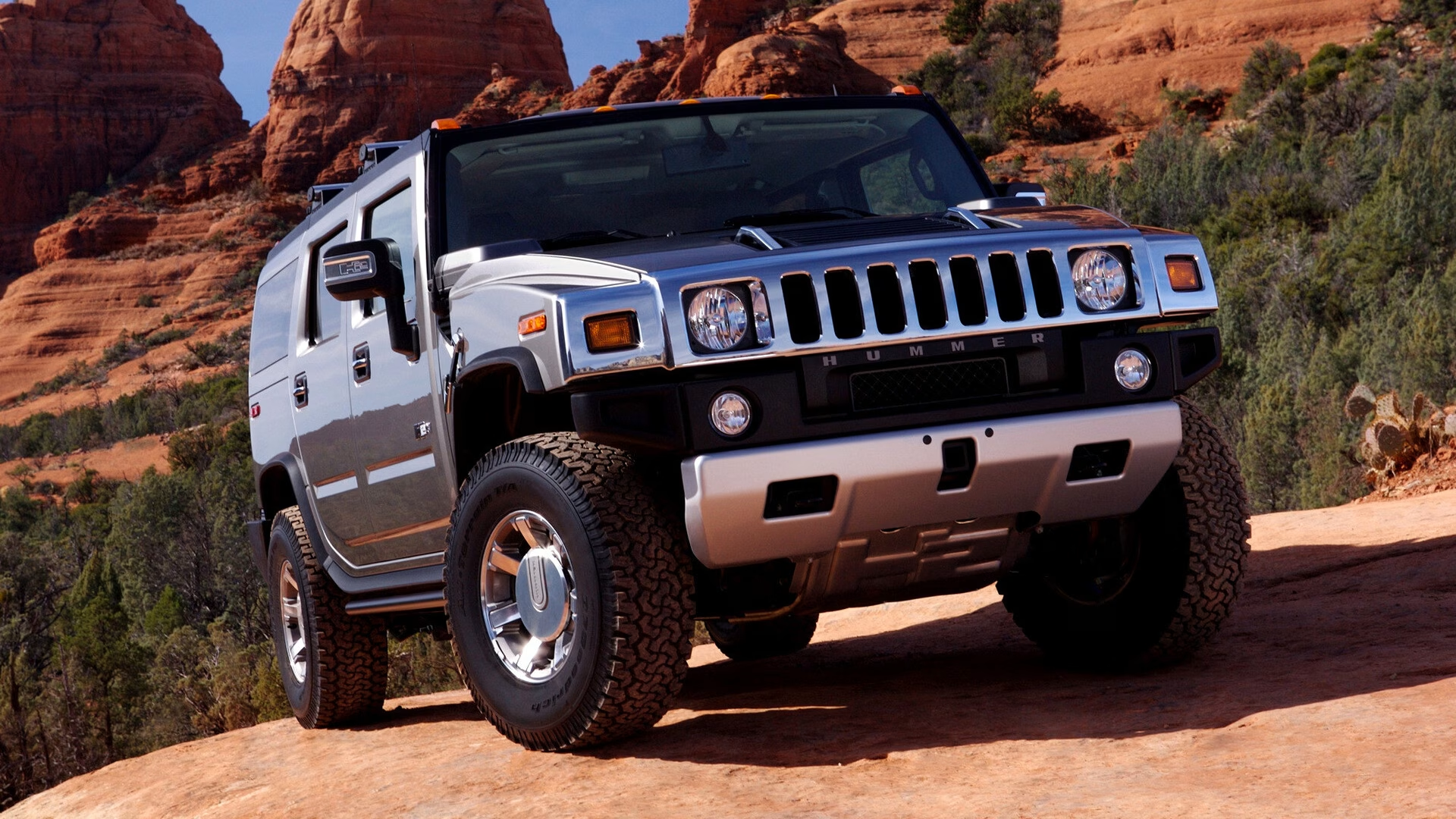Hummer: A Tale of Two Eras - Military Might and Electric Revolution
Hummer is a name that resonates with an aura of invincibility and a commanding, larger-than-life presence. It is a brand with two distinct and dramatic acts. The first act was a story of pure, unapologetic, military-derived muscle, a civilian adaptation of the legendary Humvee. The second act, after a decade of dormancy, is a story of revolutionary rebirth, with the Hummer name returning under the GMC brand as a groundbreaking all-electric "supertruck." Through both eras, the core identity of Hummer has remained the same: to be the most capable and commanding vehicle on any terrain.
The Genesis: From the Battlefield to the Boulevard
The Hummer story begins with the HMMWV (High Mobility Multipurpose Wheeled Vehicle), better known as the Humvee, built by AM General. This legendary military vehicle became a hero of the Gulf War. After a public campaign championed by actor Arnold Schwarzenegger, AM General launched a civilian version, the Hummer (later known as the H1), in 1992. In 1999, General Motors acquired the marketing rights to the brand, continuing the legacy. The brand was proudly rooted in the USA.
Core Philosophy: "Like Nothing Else"
The original Hummer's slogan was simple and powerful: "Like Nothing Else." This perfectly captured its essence. A Hummer was not designed to be practical, efficient, or subtle. It was designed to be the biggest, toughest, and most capable vehicle on the road, a philosophy born from its military roots. The modern GMC Hummer EV carries this philosophy forward, but with a new technological twist. It is still "like nothing else," but now it achieves its dominance through revolutionary electric power and futuristic technology.
Defining Moments and Iconic Achievements
Hummer's history is a story of iconic vehicles that are impossible to ignore.
- The Hummer H1: A True Military Vehicle for the Street: The original H1 was, for all intents and purposes, a street-legal version of the military Humvee. Its immense width, incredible ground clearance, and Central Tire Inflation System made it the most capable production off-road vehicle in the world, a true icon of ruggedness.
- The H2: Bringing Hummer to the Masses: The Hummer H2, based on a GM heavy-duty truck platform, was a more civilized and comfortable interpretation of the Hummer ethos. It captured the bold, military-inspired styling of the H1 in a more usable, everyday package, becoming a massive cultural symbol in the early 2000s.
- The H3: A More Manageable Package: The H3 was a smaller, more maneuverable, and more affordable Hummer based on a mid-size truck platform. It made the iconic Hummer styling and off-road capability accessible to a wider audience.
- The Rebirth: The GMC Hummer EV: After the original brand was discontinued in 2010 during GM's restructuring, the nameplate made a shocking return in 2020 as a sub-brand of GMC. The GMC Hummer EV, available as a pickup and an SUV, is a revolutionary all-electric "supertruck" with up to 1,000 horsepower and groundbreaking features like "CrabWalk" and "Watts to Freedom."
The Two Eras of Hummer
Understanding Hummer requires understanding its two distinct lives.
The Original Era (1992-2010)
This era was defined by internal combustion engines, a focus on military-derived toughness, and an unapologetic, larger-than-life presence. The key models were:
- H1: The original, uncompromising off-road king.
- H2: The popular, more civilized cultural icon.
- H3: The smaller, more accessible adventurer.
These vehicles are now popular in the used market for their unique style and legendary toughness.
The Modern Electric Era (2022-Present, as GMC Hummer EV)
This new era redefines "ultimate capability" with electric power. The key models are:
- GMC Hummer EV Pickup: The open-bed "supertruck."
- GMC Hummer EV SUV: The enclosed, more maneuverable super-SUV.
These vehicles represent the cutting edge of EV technology, combining immense power with zero emissions and futuristic features.
Key Differentiators and Competitive Advantages
The Hummer brand, in both its forms, has always been defined by its key differentiators:
- Unmistakable, Commanding Design: No other vehicle, past or present, has the same visual presence as a Hummer.
- Ultimate Capability: Whether it's the original H1's mechanical prowess or the new EV's technological wizardry, a Hummer is engineered to be the most capable vehicle in its class.
- Brand as an Event: Driving a Hummer is an event. It is a vehicle that gets noticed, a rolling statement of power and a refusal to be ordinary.
